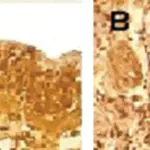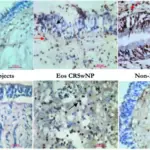Infectious rhinitis is a common cold, caused by an upper respiratory tract infection. Caused mainly by one or more viruses. Major contributors are rhinoviruses, echoviruses, and adenoviruses.
What is the Pathology of Infectious Rhinitis?
The pathology of Infectious rhinitis is:
-Etiology: The cause of infectious rhinitis is mainly viral in origin: They include adenovirus, rhinovirus, coronavirus, respiratory syncytial virus, parainfluenza virus, or enterovirus.
-Genes involved: CFTR gene.
-Pathogenesis: The sequence of events that lead to infectious rhinitis infection of the upper airway tract by the virus.
-Histology: The histology associated with infectious rhinitis shows hydropic erosion and loss of cilia. Goblet cells and submucosal glands are agitated. The lamina propria, edematous and thinly infiltrated with inflammatory cells. Swelling to the mucous membrane causes mild respiratory distress, sneezing, and snuffling.
How does Infectious Rhinitis Present?
Patients with infectious rhinitis typically there is no variance in rates of infection among men and women. The symptoms, features, and clinical findings associated with infectious rhinitis include clear discharge to mucopurulent nasal discharge.
How is Infectious Rhinitis Diagnosed?
Infectious rhinitis is diagnosed mainly through medical history and physical examination. Laboratory tests include white blood cell count, as peripheral WBC may surge during the infection.
How is Infectious Rhinitis Treated?
Infectious rhinitis is treated encompass supportive treatment for symptoms of respiratory illness since the condition is self-limited.
What is the Prognosis of Infectious Rhinitis?
The prognosis of infectious rhinitis is excellent. The manifestation, the common cold, is usually mild and self-limited. Recovery is usually within a week for adolescents/adults and within two weeks for young children.



